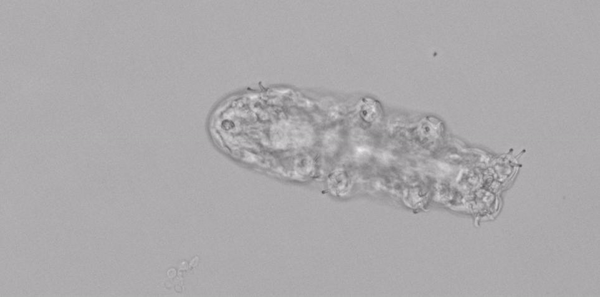Tardigrades, an animal which is known for its slow movement, using its small legs. These are the animals having the smallest legs and dependable on their locomotive abilities to make themselves free from predators and search for food, their own families, etc.
As per the research led by scientists from Rockefeller and Princeton Universities (via Sci-News), Tardigrades use the tetrapod-like stepping pattern which is mostly similar to that observed in insects despite the fact that the two groups have much difference in their size and skeletal structure.
They were first observed in the 18th century and mainly focused because of their different way of the walk and are also called ‘water bears’ and ‘il tardigrado’ because of their slow and weird way of moving.
This is the initial information related to water bears and not much is known related to their gait in their environment. Dr. Jasmine Nirody, a researcher at Rockefeller University and the University of Oxford says,
“Tardigrades have a robust and clean style of moving and they are not the uncivilized things that stumble around in the desert or in leaf litter.”
He further said that the parallelism between tardigrades’ locomotive strategy and that of big insects and arthropods revealed many interesting evolutionary questions.
Dr. Nirody with her team firstly figured out the tardigrade species Hypsibius exemplaris move and run. Dr. Nirody said,
“If you observe tardigrades under a light microscope for long enough you can catch different behaviours. We never force them to do anything. Sometimes tardigrades remain chill and only stoll around substrate, but next time they start running towards something that they like.”
Researchers came to know that tardigrades move with an average speed of 163 μm/s (0.48 body lengths per s, ranging from 79.1 to 263.5 μm/s), reports Sci-News.
But scientists are astonished when they see how feet of Hypsibius exemplaris contact the ground after gaining momentum Vertebrates have different gaits for each specific speed while tardigrades are similar to insects and have not even changed their basic moving patterns.

In this situation, Dr. Nirody says,
“There is discontinuity when vertebrates shift from walking to moving. With arthropods, all stepping patterns exist along the same continuum.”
Tardigrades are observed sharing locomotive strategies with bigger insects. The reason can be, as they do not cleanly belong to any taxonomy, and may share common ancestors with insects like flies, ants, etc.
It can be possible that there is no ancestral relationship between tardigrades and arthropods, but might be because the groups of organisms independently reached the same walking and running style due to evolutionarily advantageous.
The research is published in the Proceedings of the National Academy of Sciences (PNAS).
